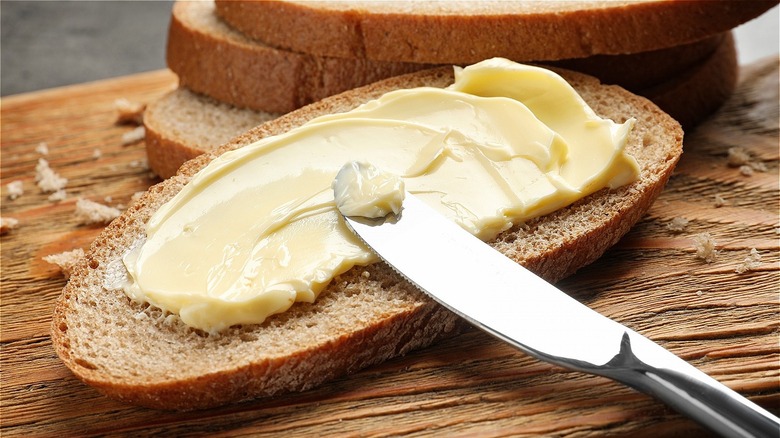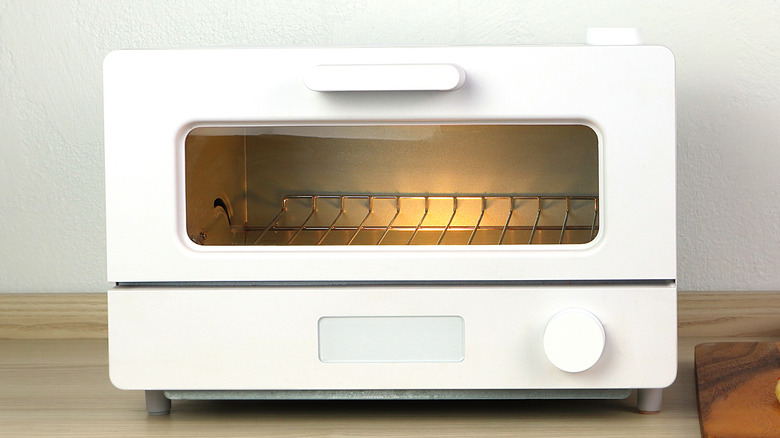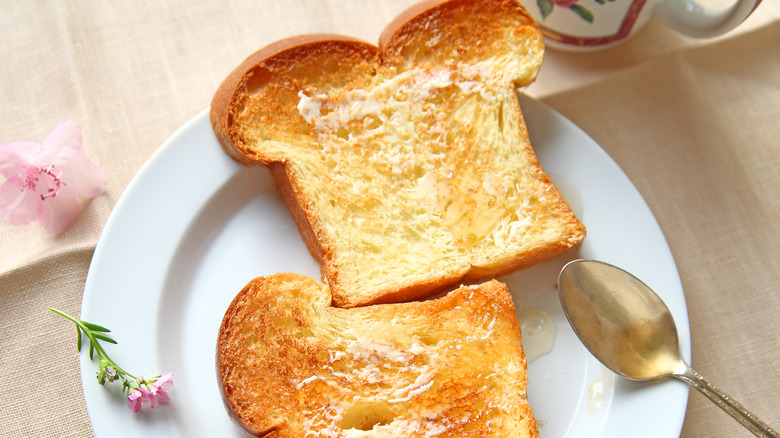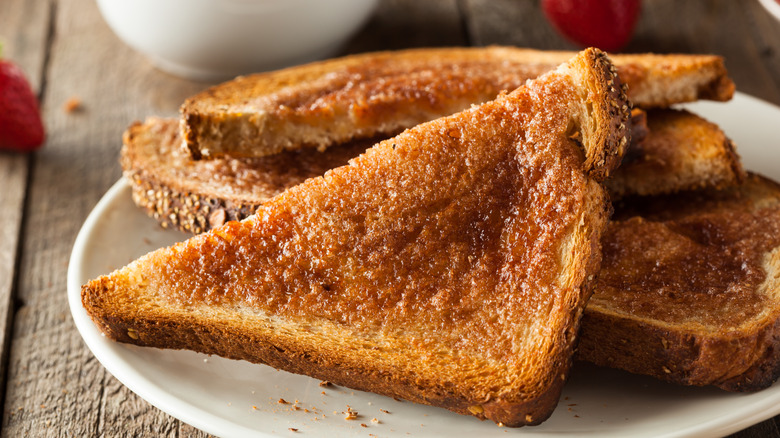You Should Butter Your Bread Before Toasting, But There's A Catch
When it comes to food, small changes can produce big transformations. We know this, but we often focus on more sophisticated categories, like baking, and ignore how it applies to everyday basics. But most of us realize that even the essential parts of our daily food lives could be improved upon through small changes — the heated discussions over the best method for brewing coffee remind us of that. The downside is usually time or money. Often, improvements require some extra cash or an extra step, precious resources that aren't always available, especially in the rush to get out the door in the morning or put a meal on the table.
So let's talk toast. The most basic of breakfast foods, the neglected side at the diner, a formerly safe food that isn't so safe now as gluten-free diets become prevalent. For all its boringness, toast has a lot of potential of the mostly untapped sort (per The U.S. Sun and Epicurious).
We really shouldn't take toast for granted, because it's so much better when we take its needs seriously. It clearly needs something: On its own, toast is just plain dry, which is why we butter it. But our buttering is often a case of too little, too late. What if we told you there's a way to make your toast something really special, and it doesn't involve an extra step or extra butter–you just need to switch up the order of things?
The catch? Gravity
You already know that changing the order of things can be a game changer: salting the water before you boil your pasta, whisking your eggs before you add them to your batter, and freezing your butter before you combine it with your pastry makes all the difference in the end product. It's the same thing with toast. Buttering it before toasting yields infinitely superior results (via Epicurious).
What's the catch? You can't use your toaster – at least, not the vertical kinds where the bread pops up. It's all about gravity and electricity; if you put buttered toast in a toaster, the butter will melt and slide off as the bread gets toasty, and that same butter will end up on the electrical components of the appliance. This results in a lose-lose scenario with no butter on your toast, no working toaster, and, possibly, the beginning of a kitchen fire .
As noted by Food 52, pre-buttering works very well in a toaster oven, grill, skillet, or even in a regular oven with a toast or broiler function since any horizontal surface means gravity is working for you, not against you. You simply butter your bread before you put it in the toaster oven and let those heated coils do their magic. To stay on the safe side, keep an oven tray underneath the buttered bread so that any hot drips that seep through don't fall onto the toaster's heating elements .
Why does it matter?
If you've never tried this method of making your toast, you might be wondering why the fuss. It comes back to heat and gravity. When you butter your bread before toasting it, the butter has nowhere to go but down as it melts, so it seeps into the whole piece of bread rather than staying on the top surface (via The U.S. Sun). Instead of dry toast slathered with cold, thick butter, you get unctuous toast with a crispy top and perfect mouthfeel.
This approach has many virtues. First, it means you can actually use less butter and it will feel like more since it permeates the bread more effectively. Second, you can use cold butter and it will still be fine, since it will melt during the process according to Food 52 – though soft butter will be easier to spread so that it coats the entire surface evenly, per Epicurious. Third, your bread will adopt a new and more forgiving texture: If you don't eat it right away, it will not adopt a scratchy, brick-like surface. Plus, as Raquel Pelzel told Food 52, the sugars in the butter caramelize a little, adding an additional flavor layer (think a touch of brown butter).
This way of buttering your bread is transformative on its own and requires no additional time, money, or effort. But if you're up for experimenting, you can do even more.
The many faces of pre-buttered toast
Pre-buttered bread is the perfect blank canvas for a bevy of toast options. It's ideal for cinnamon toast, since both the butter and sugar will caramelize in the heat, adding another dimension of flavor according to Epicurious. But cinnamon sugar isn't the only thing you can add to your butter: Any sort of compound butter will sink better into your bread as it cooks, permeating your toast with its flavor (via Food 52). Honey butter is another obvious choice, but you don't need to stay sweet; savory toast made with garlic and herbs takes your breakfast in an entirely different direction. However, It's best to watch your toast if you've slathered it with compound herb butter because the greens can burn.
The many advantages of pre-buttering apply to any bready substance that gets heated or toasted — cornbread, muffins, bagels — the sky is the limit. A lightly buttered, toasted bagel takes wonderfully to additional spreads, whether that's just a cream cheese schmear or a full breakfast sandwich. Pre-buttering is probably the best thing to happen to toast since sliced bread.



